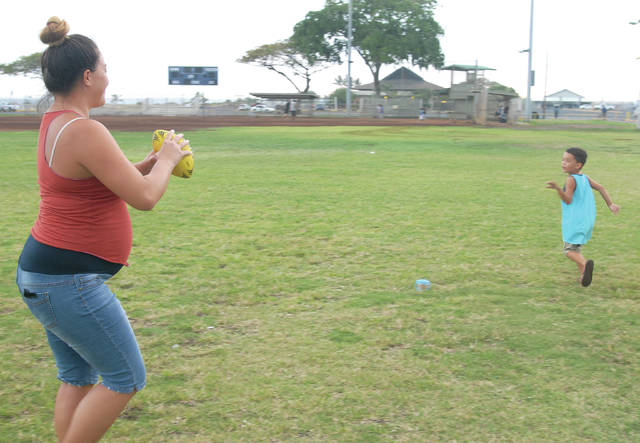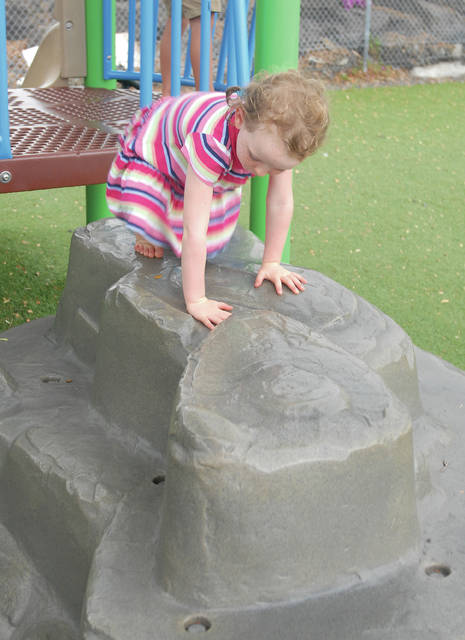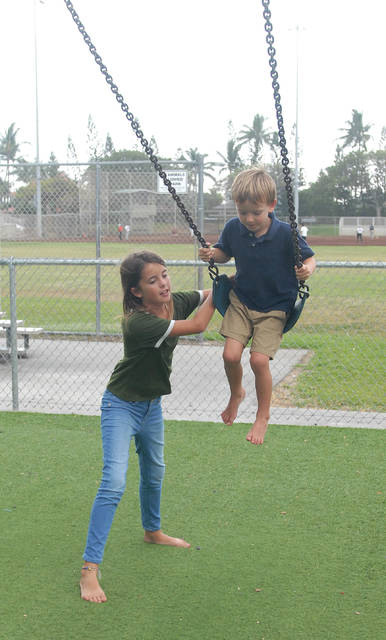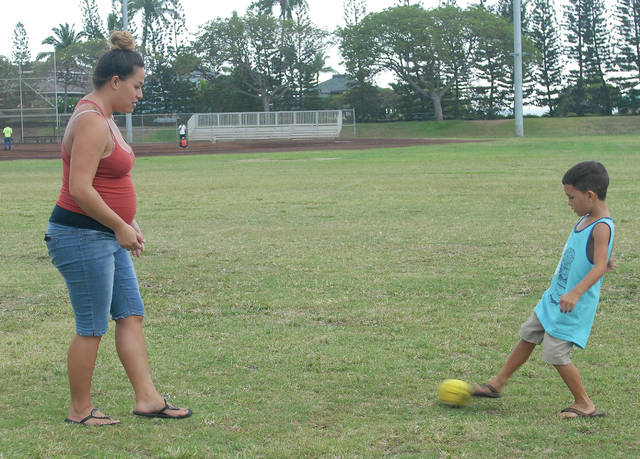Fighting the bite
KAILUA-KONA — While working a job in Keauhou area last year, Allen Lovell suddenly found himself aching.
“I just kept finding myself stretching every two seconds, trying to get this ache out, and it just didn’t go away for the next six days,” he said. “I was just miserable.”
Lovell, it turned out, had contracted dengue fever during the outbreak on Hawaii Island that confirmed 264 cases of the virus between September 2015 and April 2016.
He said before he contracted dengue fever, he’d heard that it was bad, but didn’t take too much note of it.
“As soon as I got it, I realized it’s real,” he said.
His immediate concern, he said, was his kids.
“Once I have it, a mosquito can bite me and they can get it,” he said. “So that was my main concern: me not getting bit so that the kids wouldn’t get it.”
Lovell said they got rid of all the standing water at his house to prevent potential for mosquito breeding sites.
He also credited the Department of Health of having a good handle on the issue and responding by coming out to the neighborhood and spraying.
“They understand that it was a real something to deal with, because what’d we have, something like 200 cases before it finally got diminished,” he said.
The issue of mosquito-borne diseases has been much quieter one year later. This week, the state Department of Health said they’ve only seen three cases of laboratory confirmed cases of dengue fever in 2017.
All of those cases, said Anna Koethe, public health information coordinator with the department, are cases of Hawaii residents who traveled outside the state and contracted dengue fever during their time abroad.
At Old Kona Airport Park on Thursday, Lovell said he’s not too concerned this year.
“Not until I hear about it,” he said.
His girlfriend, Kiana Limahai, meanwhile was tossing a football back and forth with her son.
“I’m not really concerned this year,” said Limahai. “I haven’t really heard too much about it either.”
Dengue fever isn’t endemic here, said Koethe, and while there currently isn’t any active transmisson going on, the state is “not out of the woods by any means.”
Hawaii is home to both mosquito species capable of spreading dengue and Zika, she explained, and mosquitoes are present in the state year-round.
But the approach of summer brings with it warmer temperatures, the opportunity for wetter weather and increased travel, all of which can raise the risk level.
“Warm summer months mean higher temperatures, as well as the potential for increased pockets of rain and even hurricanes,” Koethe said. “After storms clear, standing water is everywhere and provide the perfect breeding grounds for mosquitoes.”
With that in mind, the department encourages people to regularly clear their properties of trash and debris and ensure potential breeding areas like buckets and wheelbarrows aren’t collecting water.
Summer also brings with it an increase of travelers to and from Hawaii.
“Hawaii is at the crossroads of the Pacific and one of the most popular tourist destinations in the world,” she said.
Koethe said several countries in regions like Latin America, the South Pacific and Southeast Asia are currently seeing active transmission of dengue and Zika.
The risk of those diseases coming to Hawaii increases, she said, both with visitors who travel to or through Hawaii as well as local residents traveling abroad for vacation.
And while there’s currently no local transmission in the state, Koethe said the department has been working to keep it that way.
Statewide budget cuts in 2008 and 2009 created challenges for the department during the outbreak on Hawaii Island, Koethe said, but the department has since been able to rebuild its Vector Control program.
That includes a network of “mosquito surveillance traps” that can collect data for the development of control strategies as well as procedures that allow the department to respond even before suspected cases are confirmed in the lab.
“Whenever a suspect case is reported to the department, a Vector Control team is sent to the case’s residence to conduct a survey of the property and all properties within a 200-yard radius for any potential mosquito breeding areas,” Koethe said. “Staff members also take the time to educate home and business owners about preventing mosquito breeding areas and may treat heavily infested areas to eradicate mosquitoes.”
That education also includes efforts to teach the general public about preventing mosquito-borne illnesses, such as last year’s “Fight the Bite” campaign, which combined advertising, news media and public outreach to get out the word.
“Months of research, discussions and lessons learned from the recent dengue outbreak went into the development and enhancement of educational materials and resources created for distribution to the public during community outreach opportunities, such as presentations, workshops, and health fairs,” Koethe said.
The department is also referring to a statewide initiative designed to safeguard against biological threats.
In January, the state released its first interagency biosecurity plan, an initiative designed to safeguard threats to health, industry and native species.
The plan created close to 150 prioritized action items to be implemented over the course of a decade, according to news files.
It also identified a gap in the Department of Health, finding that it was only operating at 60 percent capacity for what it needs to respond to outbreaks of mosquito-borne diseases.
“(The Department of Health’s) goal for a fully staffed Vector Control Branch is in line with the goal identified in the Biosecurity Plan,” said Koethe. “Since then, the department has worked diligently to fill the positions it was granted by the Legislature, and plans to request further positions in the future to reach full operating capacity.”






